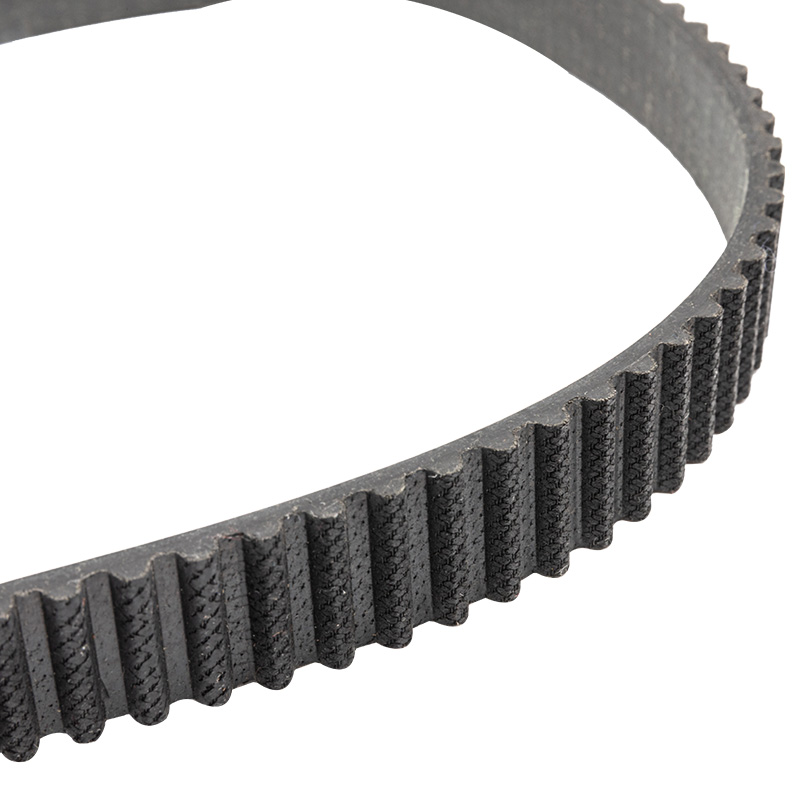HNBR (Hydrogenated Nitrile Butadiene Rubber) offers several key advantages when used in automotive timing belts:
Temperature Resistance: HNBR rubber's prowess in temperature resistance is a result of its molecular architecture, characterized by hydrogenation. This molecular structure not only allows it to withstand high temperatures encountered in engine bays but also ensures minimal degradation over prolonged exposure. It's akin to an insulating shield that protects the timing belt from the relentless heat generated within the engine compartment during operation.
Chemical Resistance: The chemical resistance of HNBR is a nuanced defense mechanism. Its molecular composition forms an impermeable barrier, standing guard against the corrosive onslaught of various automotive fluids. This resistance is not just a surface-level protection; it penetrates deep into the polymer matrix, fortifying the timing belt against the chemical adversaries it encounters in the harsh engine environment.
Durability and Wear Resistance: HNBR's durability is not merely a consequence of its robust composition; it's an orchestrated dance of molecular interactions that defy wear, abrasion, and fatigue. The polymer chains exhibit a remarkable ability to absorb and redistribute mechanical stresses, ensuring that the timing belt maintains its structural integrity even under the relentless mechanical forces inherent in an engine's timing system.
Low-Temperature Flexibility: HNBR's low-temperature flexibility is a dynamic feature rooted in its polymer matrix's adaptability. It's not a compromise but a calculated design choice that allows the timing belt to remain supple and responsive even in frigid conditions. This flexibility is akin to a molecular ballet, ensuring that the timing belt doesn't succumb to brittleness or stiffness when faced with low temperatures.
Tensile Strength: The tensile strength of HNBR is a testament to the intermolecular forces that bind its polymer chains together. This strength is not just a numerical value; it's the molecular handshake that fortifies the timing belt, enabling it to bear the mechanical loads and stresses inherent in the engine's timing system. It's a molecular alliance that ensures the timing belt can withstand the rigors of continuous operation.
Resilience and Elasticity: HNBR's resilience is a sophisticated ballet of molecular rebound. It's not just about absorbing shocks; it's about the controlled release of stored energy, ensuring that the timing belt rebounds from deformations during operation. This elasticity is a molecular trampoline, mitigating vibrations and shocks within the timing system, resulting in a smoother, quieter, and more reliable engine operation.
Long Service Life: The extended service life attributed to HNBR is not a random outcome; it's a culmination of molecular fortitude and design precision. It's a promise that the timing belt, infused with HNBR rubber, will endure the relentless cycles of an engine's operation. This prolonged service life is a molecular legacy that translates into reduced downtime, maintenance costs, and an unwavering commitment to reliability.
Noise Reduction: HNBR's noise reduction capabilities are not just about hushing mechanical components; they're a symphony of molecular damping. It's a deliberate choreography of polymer interactions that dissipate vibrational energy, resulting in a quieter engine operation. This noise reduction is not a mere feature; it's an intentional engineering choice to elevate the driving experience by minimizing unwanted noise, vibration, and harshness.
Hnbr Rubber Automotive Timing Belts


 View More >>
View More >>
 View More >>
View More >>
 View More >>
View More >>
 View More >>
View More >>
 View More >>
View More >>
 View More >>
View More >>
 View More >>
View More >>
 View More >>
View More >>
 View More >>
View More >>
 View More >>
View More >>
 View More >>
View More >>
 View More >>
View More >>